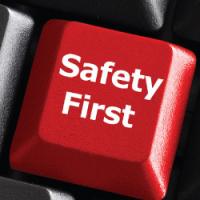- Posts: 350
- Thank you received: 11
A Flood of Danger
- Safety Toolbox Talk Webmaster
-
 Topic Author
Topic Author - Offline
- Administrator
-

Much of the United States has seen record rainfall over the past several weeks for this time of year. Areas of the country that are typically not exposed to much rainfall have been drenched with sudden storms causing flash flooding in many areas.
More than half of flood fatalities happen on the road. People are drowned when the water is deeper than expected or when they are caught in hidden debris. The engine might conk out when it gets wet or the current sweeps the vehicle off the road.
In many parts of this country, flooding is a driving hazard year-round. Rainfall or snowmelt at a higher elevation can create floods downstream, filling dry ravines with rushing water. Flashfloods come up quickly and can demolish a car. Standing water on a roadway might appear safe to cross and the occupants of the car become trapped by rising water.
If you don't want to find yourself in a spot like this, follow these precautions:
Listen to weather and flood warnings. Stay away from flood areas. If you have to go somewhere, check radio and television information for news of which areas to avoid.Do not drive through a flooded area. If you come upon a flooded road, turn around and go another wayDo not walk through flooded areas. Even a few inches of rushing water can knock you off your feet.Be extremely careful whenever you see water over a road. Even shallow water can conceal a washout of a road or bridge, as well as debris being moved by the flood.If you are caught driving in floodwaters, be aware your car may float briefly but will be moved by currents and will sink.Be especially careful at night, when it is harder to recognize flood dangers.
Although each emergency is unique, generally the best advice is to get out of your vehicle as soon as it stalls in floodwater. Don't keep trying to start the vehicle. Many deaths have been caused by people trying to move a stalled vehicle. Get out and head for high ground quickly and carefully. You might think your vehicle is a safe place to be during a flood. In fact, it is one of the most dangerous. Six inches (15 centimeters) of water can cause the car to go out of control. In just 18 inches (45 centimeters) the vehicle will begin to float, and then the driver has no way of steering or stopping.
Driving dangers are among many serious hazards related to floods. Downed power lines causing electrocution, unstable building structures, landslides, chemical and biological hazards in areas touched by floodwaters are also threats to life and health.
If you live in a flood-prone area, be prepared. Identify at least two escape routes. Keep emergency supplies packed. Leave home early if you have to get out rather than waiting until travel is dangerous.
Flooding is one of the most common disasters in this country, second only to fire. Learn about the flood history in your area, and be prepared to travel to safety if necessary.
Please Log in or Create an account to join the conversation.
- aniceto
-

- Visitor
-

Please Log in or Create an account to join the conversation.
